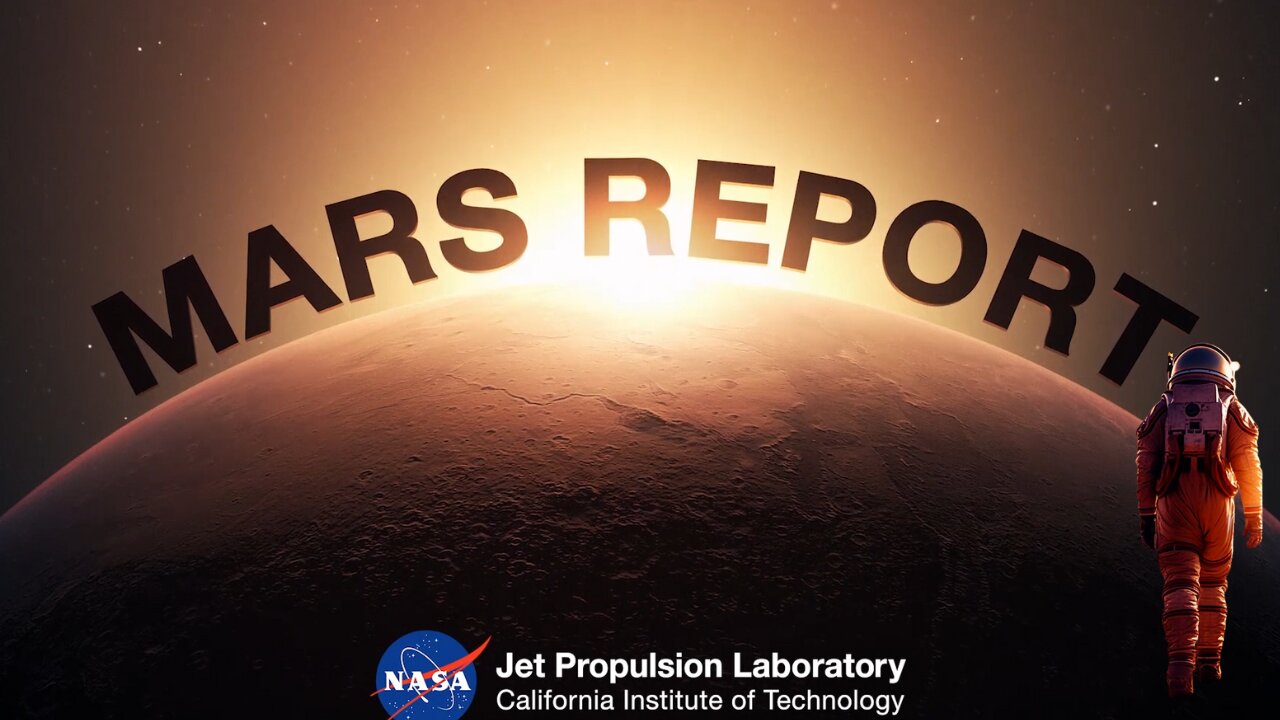Premium Only Content

How to Bring Mars Sample Tubes Safely to Earth (Mars News Report)
Bringing Mars sample tubes safely to Earth is a complex and ambitious endeavor that requires careful planning, advanced technology, and international cooperation. NASA, in collaboration with other space agencies and organizations, is currently developing a mission called the Mars Sample Return (MSR) to achieve this goal. Here are the key steps involved in bringing Mars sample tubes safely to Earth:
Sample Collection on Mars:
The first step is to collect rock and soil samples from the surface of Mars. NASA's Perseverance rover is equipped with a Sample Caching System (SCS) designed to collect and store these samples in sealed containers.
Sample Sealing and Storage:
The collected samples are sealed in specially designed containers to prevent contamination. These containers must be highly secure to ensure that Earth organisms do not contaminate the Martian samples, and Martian materials do not contaminate Earth.
Sample Retrieval and Transfer:
A future mission to Mars, which may involve another rover or robotic system, will retrieve the sealed sample containers from the storage location on Mars and transfer them to a Mars Ascent Vehicle (MAV). The MAV is designed to launch the samples into Mars orbit.
Mars Orbit Rendezvous:
Once in Mars orbit, the MAV will rendezvous with an orbiting spacecraft designed to bring the samples back to Earth. This spacecraft is called the Earth Return Vehicle (ERV).
Transfer to Earth-bound Spacecraft:
The samples are transferred from the MAV to the ERV, which is equipped with a sealed containment system to ensure that the samples remain isolated from the space environment.
Earth Return Trajectory:
The ERV is sent on a trajectory back to Earth. This trajectory must be carefully calculated to ensure that the spacecraft re-enters Earth's atmosphere safely.
Re-entry and Landing:
The ERV re-enters Earth's atmosphere, and its heat shield protects it from the intense heat generated during re-entry. The spacecraft then lands at a predetermined location, such as a remote desert or an ocean, using a parachute or other landing systems.
Sample Retrieval on Earth:
Once the ERV has landed safely, a team of scientists and engineers retrieves the sealed sample containers. These containers are transported to a specialized containment facility designed to handle potentially hazardous materials.
Sample Analysis:
Scientists analyze the Mars samples in carefully controlled environments to prevent any potential contamination. This analysis can provide valuable insights into the geology and potential signs of past life on Mars.
Sample Distribution and Research:
After analysis and research, portions of the samples may be distributed to research institutions around the world for further study.
Throughout this entire process, stringent planetary protection protocols are followed to minimize the risk of contaminating Earth with Martian materials and vice versa. International cooperation and collaboration are critical to ensure the success of the Mars Sample Return mission and the safe handling of these precious samples from another planet.
-
 LIVE
LIVE
Jewels Jones Live ®
1 day agoWINNING BIGLY | A Political Rendezvous - Ep. 108
2,973 watching -
 1:21:05
1:21:05
I_Came_With_Fire_Podcast
15 hours ago"Veteran Health, Military Culture, and American Exceptionalism" with Matt Kenney
65.5K11 -
 23:21
23:21
Simply Bitcoin
1 day ago $29.84 earned$1M Bitcoin in 2025? | Trump's Plan to End the Fed Revealed!
142K59 -
 17:19
17:19
SLS - Street League Skateboarding
17 days agoTop Moments from the Men’s Super Crown Final! Nyjah Huston, Giovanni Vianna and Gustavo Ribeiro 👑
76.4K -
 LIVE
LIVE
Major League Fishing
3 days agoLIVE! - Bass Pro Tour: Stage 1 - Day 3
810 watching -
 47:00
47:00
vinndoggradiousa
5 days agoBYE LEGACY MEDIA guest/ Sam Anthony of YourNews.com
14.5K -
 13:55
13:55
Clownfish TV
17 hours agoOrcs REMOVED from Dungeons & Dragons New Monster Manual?!
15.4K12 -
 15:38
15:38
Chris From The 740
8 hours ago $5.40 earnedThe EAA Girsan Match X 2311 : Premium Features, Unbeatable Value!
63.3K13 -
 14:23
14:23
Degenerate Jay
6 hours ago $0.81 earnedPeople Forgot What Metal Gear Solid Is?
34.3K6 -
 1:01:23
1:01:23
FamilyFriendlyGaming
19 hours ago $3.73 earnedCat Quest III Episode 14
50K